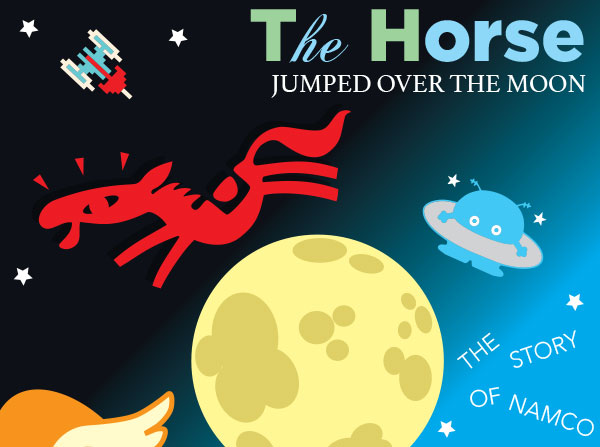
The previous blog talked about how Namco changed the attraction Magical Illusion multiple times over the life of Wonder Eggs. It evolved into Mirrorona / Miranda’s Psychological Labyrinth, The Fortune Telling Witches House, and finally the Wedding Judge. Each version had a tighter story. The elements that shaped each version made it more appealing to couples rather than general audiences. It was not the only one of Namco’s patented “Participatory Story Attractions” that evolved over the years. Many traditional parks featured a haunted house. These were often rides, but were also popular walk through mazes during the holidays. Wonder Eggs had a very unique haunted house that only got better with age.
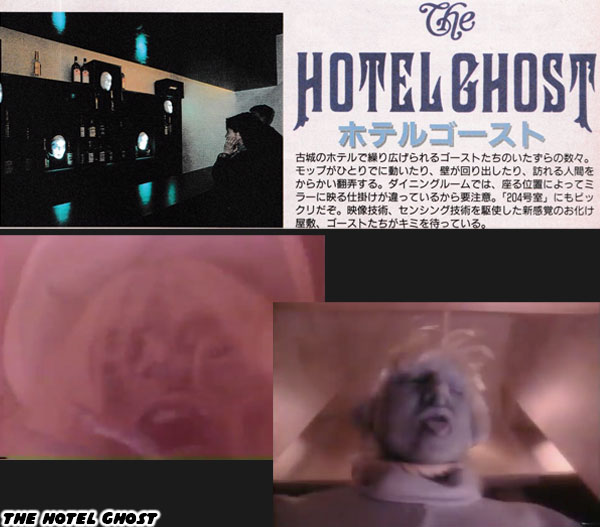
When the park opened in 1992 the original version was called the Hotel Ghost. This attraction had multiple rooms where guests could watch the antics of the ghosts play out in front of them. There were animatronic characters, projection mapping on statues, pepper’s ghost effects in mirrors, and various other things to scare guests. Here was the original description of the attraction; “A number of mischiefs played out by ghosts at an old castle hotel. The mop moves on its own, the walls rotate, and they tease and play with the people who visit. In the dining room, be careful as the mirror will reflect differently depending on where you sit. “Room 204” also surprised me. Ghosts are waiting for you in a new type of haunted house that uses imaging and sensing technology.”
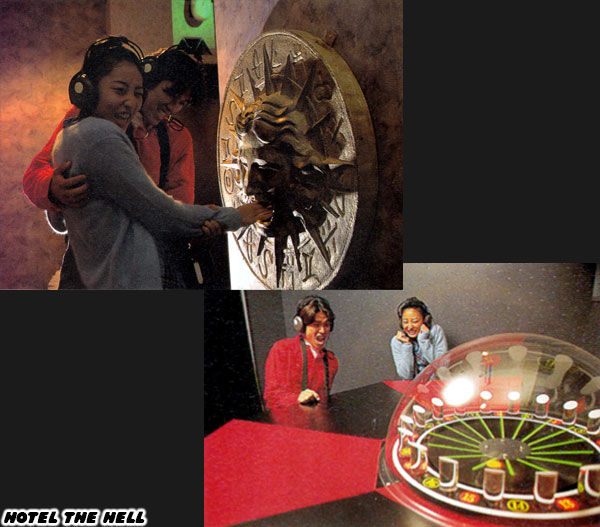
The Hotel Ghost was fun however Namco discovered that there was little reason for dreamers to return to it. Repeat visits at each attraction were crucial for the success of the park. So the team went back to the drawing board, and had an entirely new experience ready within three years. Hotel the Hell would debut in 1995 at Wonder Eggs 2. A new story, new rooms, and new play elements were added. Dreamers were given a wireless headset called a “Psycho Receiver.” It allowed them to hear the voices of the souls trapped within each room. The thing about the experience was that each person heard a completely different thing through their receiver.
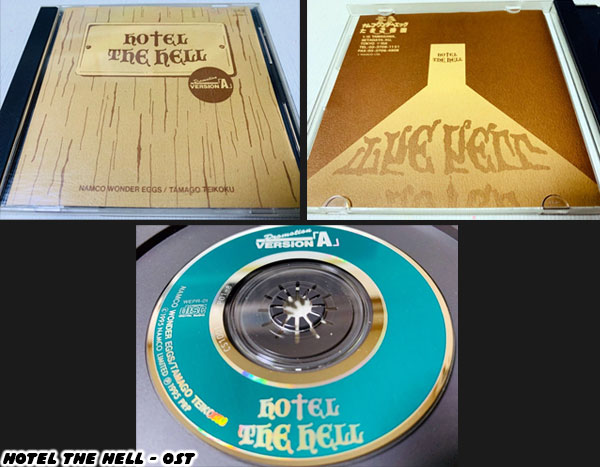
The goal of the attraction was to figure out where the demons running the hotel had kidnapped the beautiful captive Helena to. The clues that each person got were pieces of a bigger story. They never contradicted each other, but forced guests to not only listen for clues, but also watch the changing rooms, and animatronics for information. Let’s say an elevator door opened, and closed quickly. If there were numbers, or a message written on the far wall then guests only had a second to memorize the scene before they were taken to another floor.
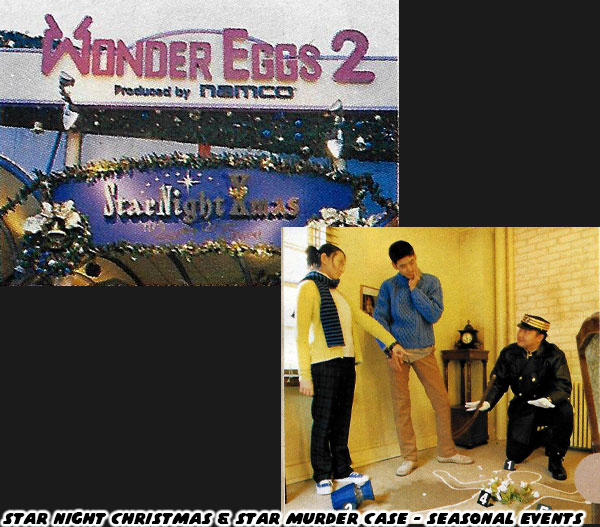
According to the official guide; “The challenges in the various rooms are very difficult to solve with one out of dozens being able to save Helena each day. It rivals the Tower of Druaga for its difficulty.” This attraction was popular with guests, and especially couples. It played like a murder mystery-meets-escape room. Two years later in 1997 an updated version called The Killing Hotel, also referred to as the Zombie Bride would debut. Once more the rooms, ghosts, and effects were changed. The attraction expanded to include the land around the Hotel. The story also changed tremendously. This time around a murderer named Jacob came back as a zombie, and hid the body of Mary somewhere on the property. It was up to dreamers to find her body before she came back as Jacob's zombie bride. It was speculated that the kidnapping and murder plot was changed to zombies because of the
Kobe serial child murderer case which happened just before the attraction opened.
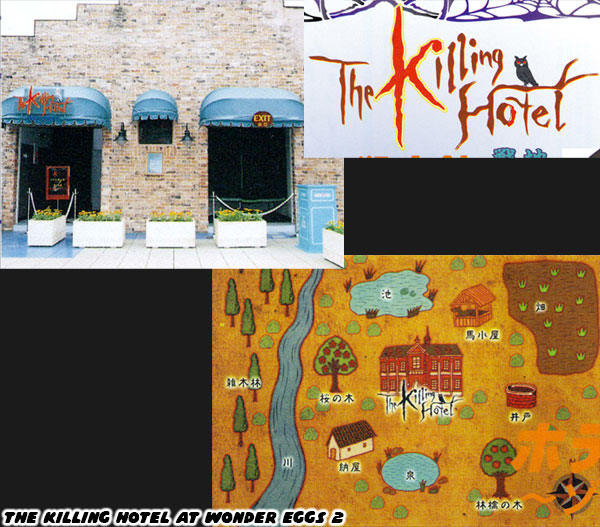
The wireless technology, and branching paths had been improved in the span of a few years. They were now called “Zombie Receivers” which still allowed dreamers to hear ghosts. Again each one got different messages, and clues as they went across the different locations. The hotel had everything from banquet halls where you could dine with ghosts, to a casino, and a barbershop. Dreamers were tasked with not only figuring out what happened to Mary’s body, but also where her soul was trapped. If guests managed to catch all of the clues they could enter a combination on a coffin, and it would open revealing multiple “souls.” These were actually Carnival Coins with different barcodes on them. Guests were only allowed to pick one which could be redeemed for a prize. Then they were then prompted to identify the location of the body. If they were correct then the hotel employees would reward them with a sticker as well. This version had multiple endings so visitors never got the same outcome twice. It greatly increased the repeat visits for the attraction.
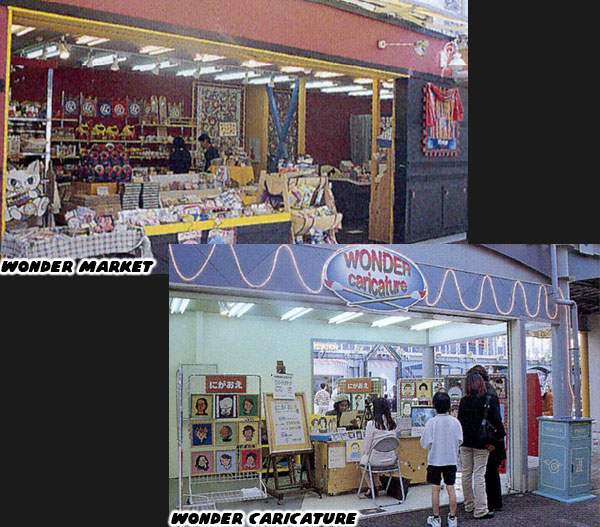
Every good theme park needed more than memorable attractions. Wonder Eggs was no different in this regards. It had small, quick service restaurants. It also had at least three souvenir shops which sold exclusive Wonder Eggs merchandise, Namco arcade items, and products from the kid friendly
Namjatown (which was short for Namco Japanese Town). These stores were
Daimaru which sold mostly stationary items. The Pyrallis Pockets sold souvenirs featuring the lovable Pyrallis characters. There was also the Seventh Grocery, which was often decorated, and sold seasonal items. The park was a hit with locals, and tourists. Within a year it had a million visitors. This inspired the team at Namco to propose a second gate. If Wonder Eggs was a park that had a classic fantasy theme then this second park would be inspired by the future of play. The name was Tamago Teikoku aka the Egg Empire.
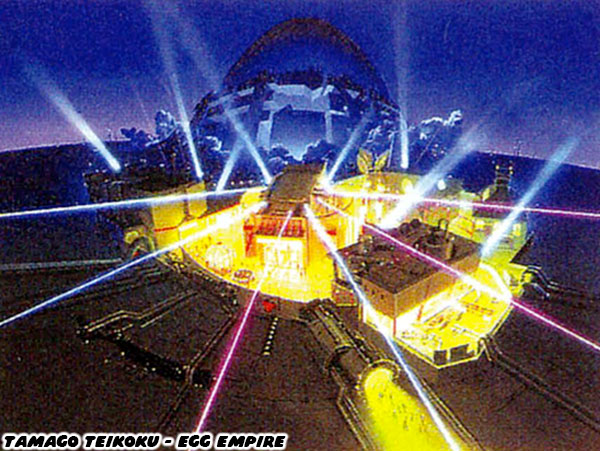
Namco was able to secure a little bit more land on the site of the old Futakotamagawa amusement park. Once more it was all hands on deck. The mandate was to build a new park within a two years. It was the same pressure cooker mentality that delivered Wonder Eggs from the studio just two years after Expo ’90. Were they able to hit the mark? Or did they have to cut corners? We will look at this in the next entry of the blog series. I hope to see you back for that. Were there any defunct parks that you visited? Please tell me about it in the comments section. As always if you would like to sponsor me
please visit my Patreon page and consider donating each month, even as little as $1 would help make better blogs and even podcasts!
Wonder Eggs, and Egg Empire research collected from: Wonder Eggs Guide Map, Namco Graffiti magazine, the book “All About Namco II", NOURS magazine, The Namco Museum, Namco Wiki, Ge-Yume Area 51 Shigeki Toyama Collection, mcSister magazine, first person attraction details from Yoshiki. Event details from Hole in the Socks
















No comments:
Post a Comment